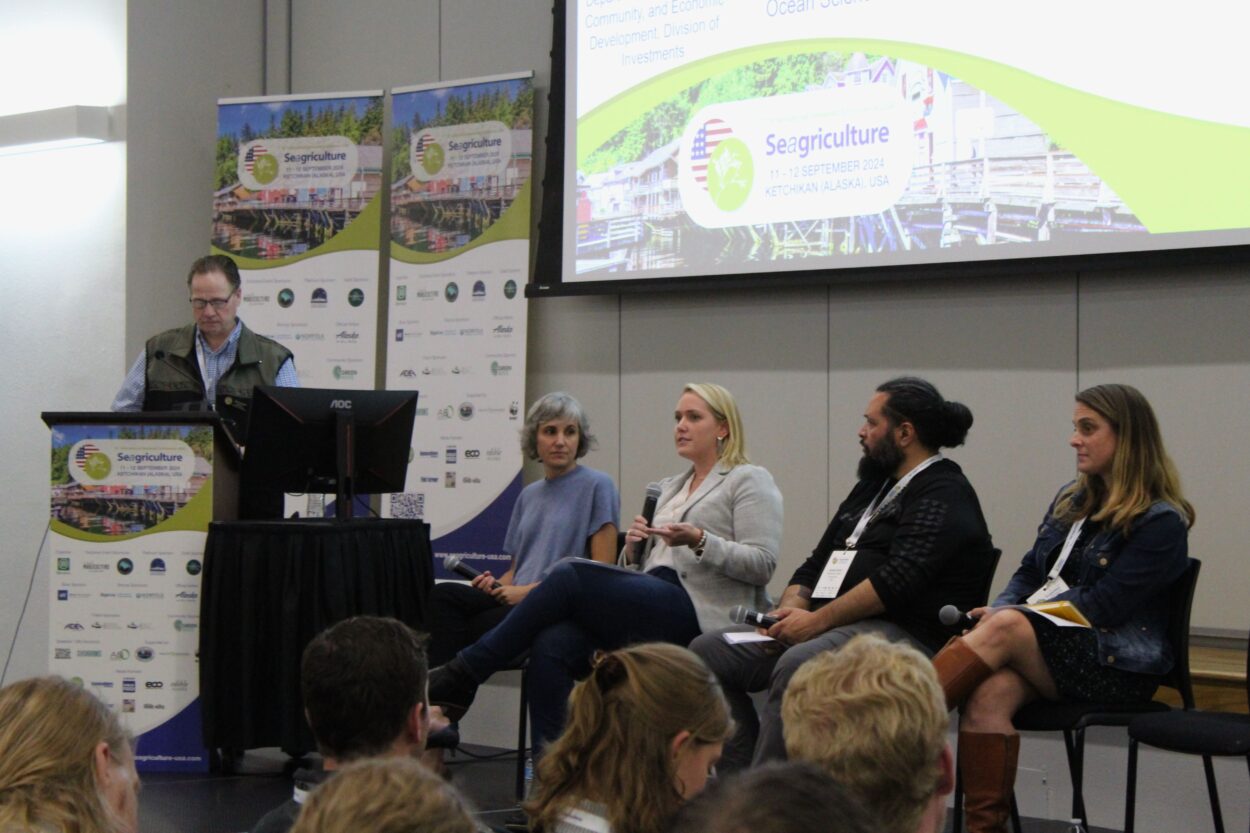
Nearly 200 guests from ten different countries gathered in Ketchikan last week for a conference all about farming seaweed.
The sea agriculture summit, or Seagriculture, has its roots in Europe, but for the past two years has included a U.S. edition, hosted in Maine. Kuno Jacobs is the managing director of DLG Benelux, the company that organizes the conference. He said while Maine is currently America’s biggest seaweed producer, Alaska is right behind it.
“Alaska is number two,” Jacobs said. “And especially because Alaska is in the early stages of developing the industry and the Seagriculture conference is all about fostering a dialogue, learning from one another. So we all believed that that would be a perfect fit for Alaska and the right momentum to do it.”
Jacobs said the industry’s potential for growth is huge. Alaska has more miles of coastline than all the Lower 48 states combined, a fact that was frequently cited by speakers at the conference.
Much of that coastline has ideal conditions for growing seaweed, and as the state’s fishing industry has declined, many see mariculture as an exciting new economic sector. The total pounds of seaweed harvested in Alaska skyrocketed in 2021 and 2022, but fell sharply last year.
Farmers at the conference said they can produce more, but there aren’t enough buyers. Much of the focus now is on developing those markets.
Jacobs said the markets exist — big companies are interested in seaweed or its byproducts. But he said we’re stuck in a “chicken versus the egg” moment.
“There is a demand. But those multinational [companies] don’t know what small is. So if they move in, they move in big. And at the moment, the seaweed industry can’t supply those volumes at a steady quality,” Jacobs said. “So everyone is kind of looking to one another, the chicken and the egg.”
Jacobs said the conference tried to address that by bringing representatives from across the value chain into the same room, and starting conversations about getting Alaska’s potential supply matched with demand.





